20 Types of Ducks in Michigan (With Pictures)
Last Updated on
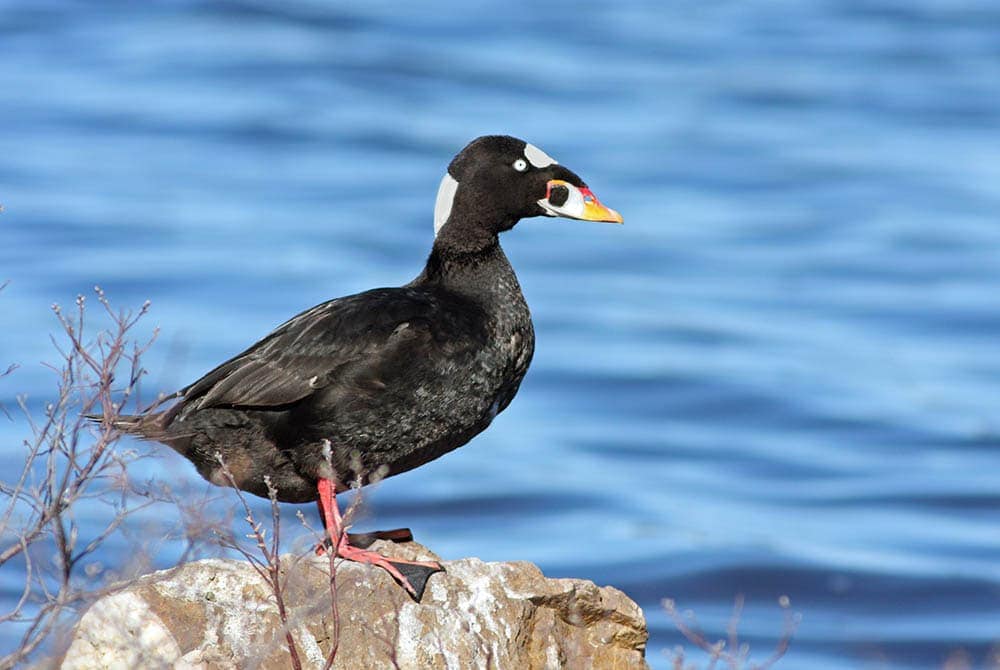
There are so many duck breeds, it’s hard to keep them all straight! Some ducks are dabbling, sticking their heads underwater with their tails straight up in the air to search for food. Other ducks are diving, meaning they swim completely underwater to find food.
Let’s look at the common breeds of ducks that you’ll find in Michigan. First, we’ll look at the dabblers before moving on to diving ducks.

The 20 Types of Ducks Found in Michigan
Dabbling Ducks
1. Mallard Duck
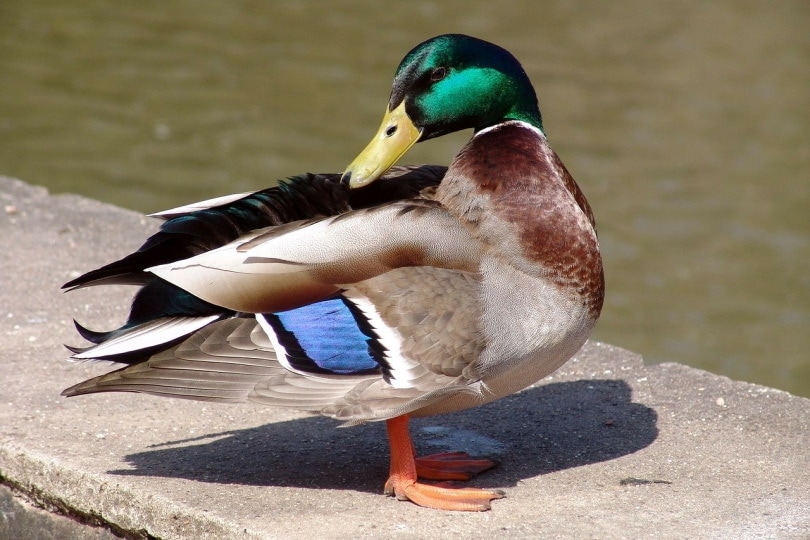
| Length | 20–26 inches |
| Weight | 1.6–3.5 pounds |
| Males | Green, grey, brown, black, blue, white |
| Females | Brown, blue, white |
Mallards are common sights around cities or local parks that have ponds or lakes. They are likely the ducks that you most frequently see, usually in pairs of a male and female. The males have green heads and white bands around their necks. Females are mottled brown. Both sexes have patches of purplish-blue on their wings that are visible when the birds fly. These ducks show up anywhere there’s water and have been known to swim in backyard swimming pools.
2. Wood Duck
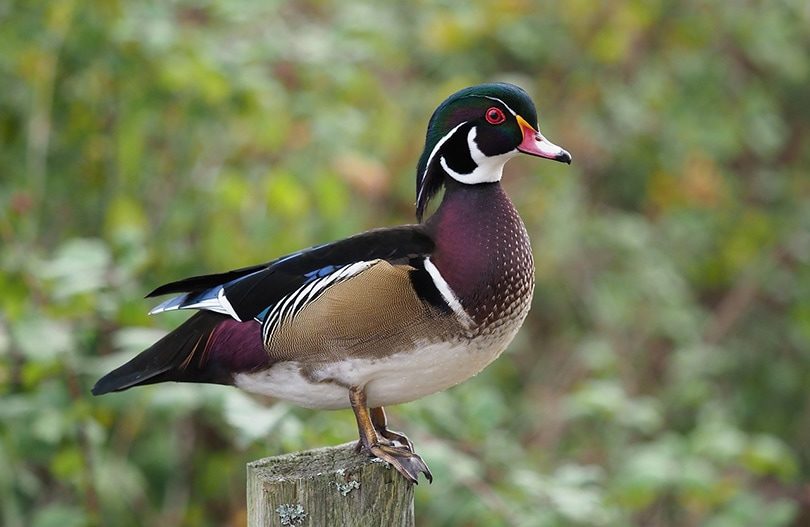
| Length | 19–21 inches |
| Weight | 1–1.5 pounds |
| Males | Black, white, purple, green, chestnut |
| Females | Grey, brown, white |
Male Wood Ducks are brilliantly and uniquely colored. They have red eyes and white neck patches. Iridescent green and purple feathers line their heads and backs. Females are dull greyish brown with spots of white and teardrop-shaped white patches around the eyes.
Wood ducks make their nests in tree holes. They are one of the few ducks that have sharp claws to grip and perch on tree branches. You’ll find them in swamps, marshes, ponds, and on logs around the shorelines.
3. American Black Duck
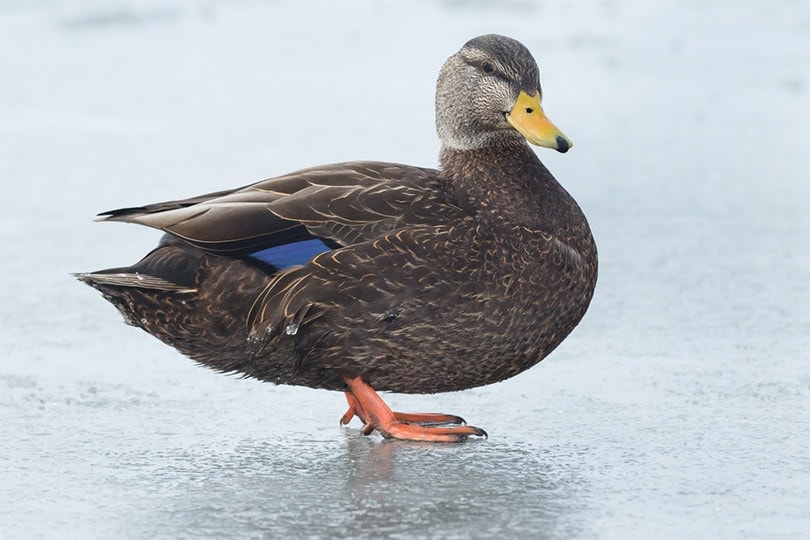
| Length | 19–25 inches |
| Weight | 1.6–3.6 pounds |
| Males | Dark brown, light brown, violet, blue |
| Females | Dark brown, light brown, violet, blue |
The male and female American Black Duck look similar, though you can tell the difference between them by their bill color. Males have yellow bills, while females have olive green bills. Despite their name, both sexes have dark brown bodies with light brown heads. There are patches of violet-blue on their wings.
American Black Ducks are the heaviest dabbling duck species. Their coloring resembles that of the female Mallard.
4. Green-Winged Teal Duck

| Length | 14.5 inches |
| Weight | 0.5–1.1 pounds |
| Males | Grey, cinnamon, green, white, tan |
| Females | Brown, yellow |
From the heaviest of the dabbling ducks, we move on to the smallest of the species that you’ll see in Michigan. The Green-Winged Teal Duck is tiny, but the males pack a large amount of color in a small package. They have cinnamon heads with bright green ear patches. Females have dark eye lines and mottled brown plumage. When in flight, you can see a green patch on the wings of both sexes.
These ducks are highly migratory and enjoy being around ducks of different species. Try to spot these beauties in a large group of ducks. They’ll likely be the smallest ones there. Even though they are hunted regularly in the United States, their populations remain stable in Michigan.
5. Blue-Winged Teal Duck
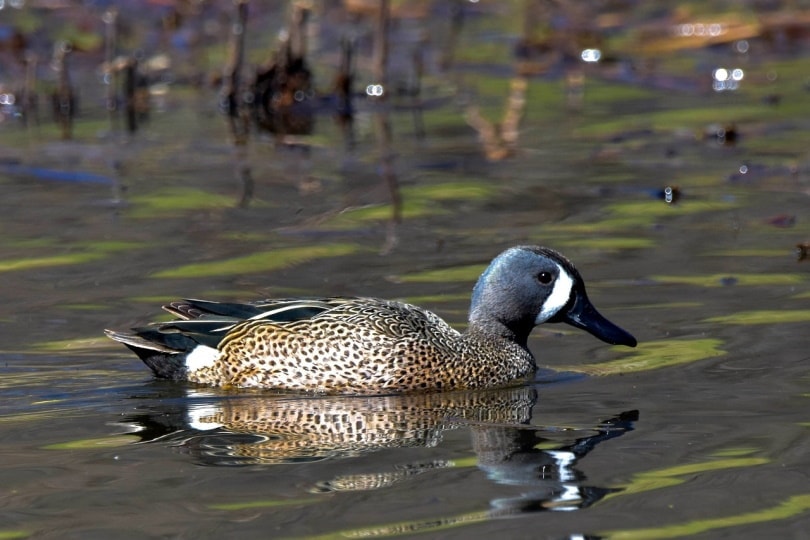
| Length | 16 inches |
| Weight | 0.5–1.2 pounds |
| Males | Brown, blue, white, grey |
| Females | Brown, blue, grey |
Blue-Winged Teal Ducks are found in marshes, ponds, lakes, and other shallow wetlands in Michigan. Males have blue-grey heads, mottled brown bodies, and black heads and wings. There are white stripes in front of the eyes. Females are mottled brown with black bills. Both sexes have blue and green patches on their wings that are only visible when the birds are in flight.
While you can find these ducks in Michigan, you won’t see them in the cold months. The Blue-Winged Teal ducks migrate to South America for the winters.
6. American Wigeon Duck
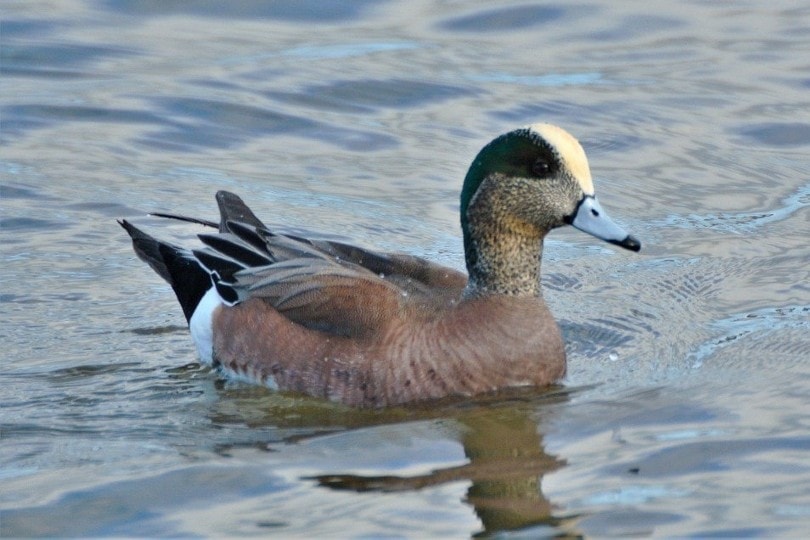
| Length | 17–23 inches |
| Weight | 1.1–2.9 pounds |
| Males | Brown, white, green, grey |
| Females | Brownish grey |
The male American Wigeon Ducks have brownish-grey bodies with green eye patches and white stripes down the center of the tops of their heads. These patches gave these ducks the nickname, “Baldpate.” Females are mostly brown with greyish heads.
American Wigeons are dabbling ducks, but they spend most of their time grazing on land. They also like to hang out on the surface of deep water and steal food from diving ducks whenever they have the chance.
7. Gadwall Duck

| Length | 18–22 inches |
| Weight | 1.1–2.3 pounds |
| Males | Grey, brown, black |
| Females | Grey, brown |
The male Gadwall duck is greyish brown with a black patch at their tail and a black bill. The female is a mottled brown with a light grey chest and orange bill. Both sexes have white patches on their wings that can be seen in flight.
These ducks tend to blend in with their surroundings, so keep an eye out for them in Michigan. If you hear what sounds like loud belching near the water, it’s probably a male Gadwall duck’s call.
8. Northern Shoveler Duck
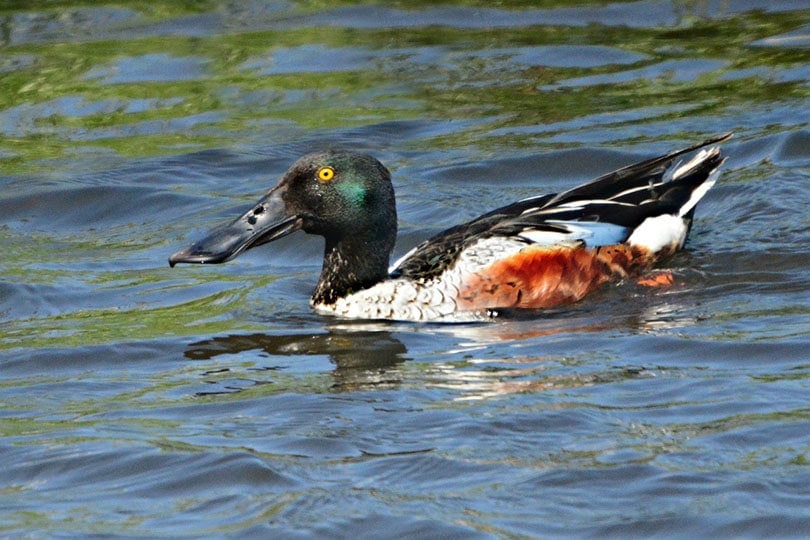
| Length | 19 inches |
| Weight | 1.4 pounds |
| Males | White, blue, green, rust |
| Females | Brown, blue |
Northern Shoveler Ducks look like Mallards, but there are distinct differences between the two. Males have green heads, but their chests are white. They have rust-colored patches on their flanks. Females are mottled brown. Both males and females have large, prominent bills that are black and orange, respectively. These bills resemble large spoons, which is how these ducks got their name.
These bills come in handy for helping the ducks find food buried in the sand and mud. Their bills also are edged with small comb-like projections that help the ducks filter their food from the water.
9. Northern Pintail Duck
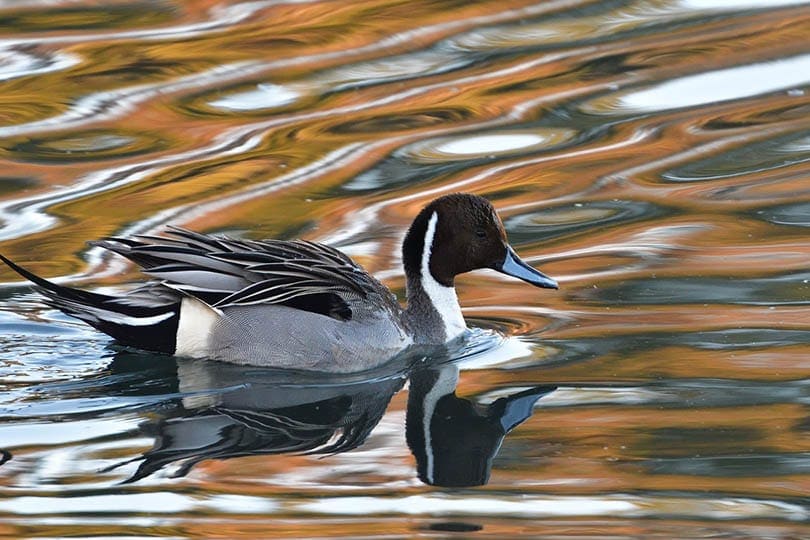
| Length | 25–29 inches |
| Weight | 1–3 pounds |
| Males | White, chocolate, grey, black |
| Females | Brown, white, tan |
Northern Pintail Ducks are identified easily by their long necks and pointed tails. The tails on the males are much longer. Males have white lines down their necks into their white chests. Their heads are chocolate with dark bills. They have grey patches on their sides. When in flight, you can see a green patch on their wings. Females have bronze patches on their wings. Their bodies are mottled brown and white with tan heads.
You’ll find these ducks dabbling on the water’s surface, eating vegetation and insects. They’re often in large groups.
Diving Ducks
10. Bufflehead Duck
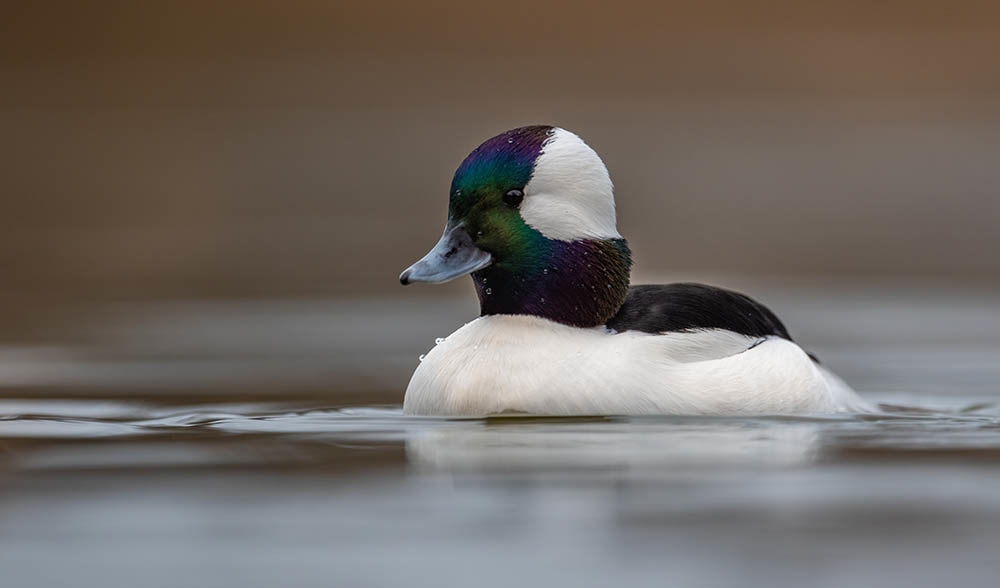
| Length | 13–16 inches |
| Weight | 0.9–1.4 pounds |
| Males | White, black, green, blue, purple |
| Females | Brown, grey, white |
Bufflehead Ducks are small with large, colorful heads. Males have white chests and dark backs. Their heads are iridescent purple and green with a white patch on the back. Females are brownish grey with white cheeks and dark heads.
Buffleheads are the smallest diving ducks and spend much of their time submerged in search of food. They can remain underwater for more than 1 minute! When they find tasty aquatic insects, they eat them underwater.
11. Canvasback Duck
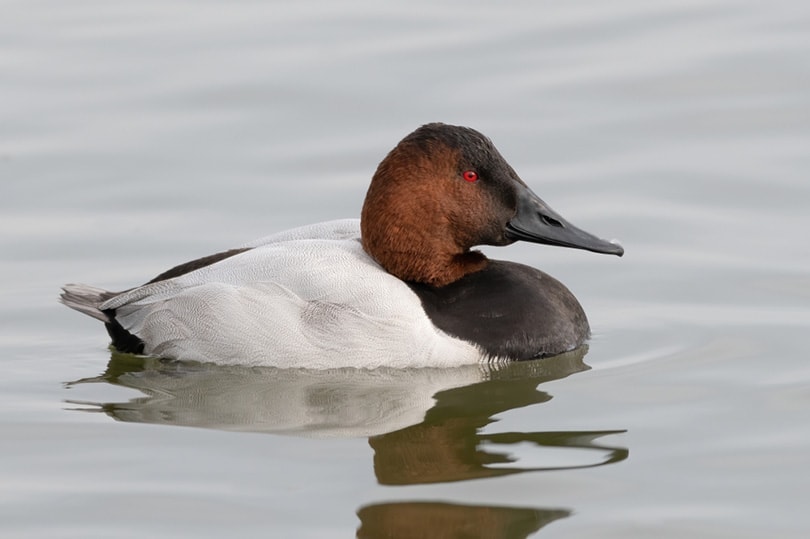
| Length | 19–22 inches |
| Weight | 1.9–3.5 pounds |
| Males | White, light grey, black, chestnut |
| Females | Grey, brown |
You’ll find these large diving ducks in small lakes, bays, and ponds in Michigan. They are the largest diving duck in the world. Canvasback Ducks eat aquatic plants and insects, spending most of their time in the water. They can dive as deep as 7 feet to retrieve food. These ducks rarely leave the water, sleeping and nesting while floating.
Males are white and pale grey with black chests and tails, dark bills, and chestnut heads. Females are grey with brown heads and chests.
12. Ruddy Duck

| Length | 14–17 inches |
| Weight | 0.07–1.8 pounds |
| Males | Black, white, chestnut, blue |
| Females | Brown, tan |
Ruddy Ducks are bold and easy to spot. The males have black heads and tails. Their chestnut bodies are a stark contrast to their white cheeks and bright blue bills. Females are brownish grey with darker heads and dark bills.
These ducks like to live in large, tight flocks. They sleep in tight groups with their heads tucked, making them look like large blobs floating in the water. Ruddy Ducks prefer to swim away from danger rather than fly. When they feel threatened, they dive away to safety.
13. Redhead Duck
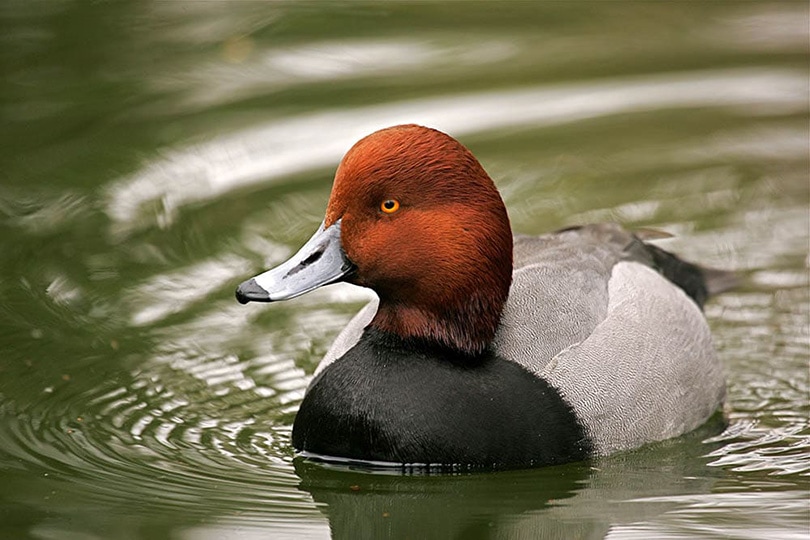
| Length | 20 inches |
| Weight | 2.4 pounds |
| Males | Red, grey, black |
| Females | Brown |
The incredibly social Redhead Ducks like to live in huge flocks. When they migrate to the Gulf Coast in the winter, their numbers can reach the thousands. Female Redhead Ducks are known for their brood parasitism. They lay their eggs in the nests of other ducks and even nests that have been abandoned.
You’ll recognize these ducks by their steep foreheads and large, grey bills tipped with black. Males have red heads, black chests, and grey bodies. Females are brown with darker backs and paler faces.
14. Hooded Merganser Duck
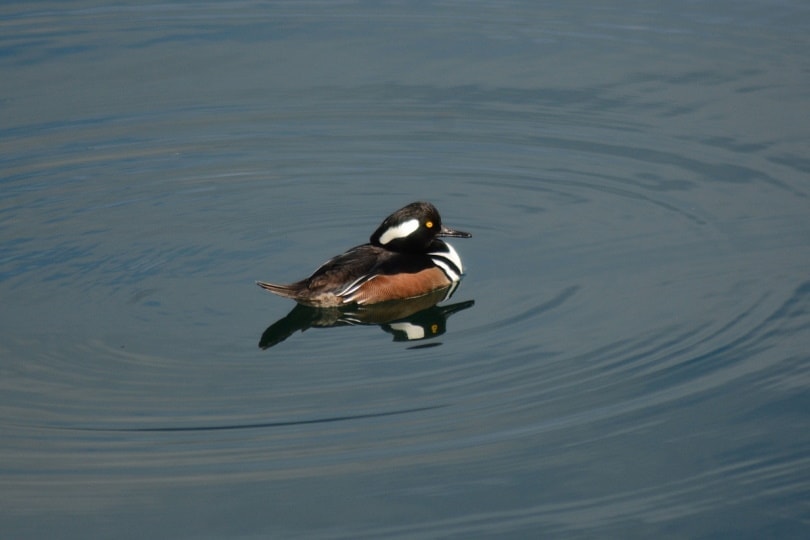
| Length | 16–19 inches |
| Weight | 1.2–1.5 pounds |
| Males | Black, white, chestnut |
| Females | Grey, brown, cinnamon |
Hooded Merganser Ducks can be identified by their extravagant crests. The males have large, black crests with white patches on each side, black backs, white chests, and chestnut flanks. Females are brown and grey with cinnamon tones in their mohawk-shaped crests.
These unique ducks nest in trees. At just 1 day old, their ducklings jump from the nest to the ground. These ducks dive to catch fish and can stay underwater for up to 2 minutes! When they resurface to eat their catch, they spin it around so they swallow it headfirst. This lets them avoid injury from any spiny fins that the fish may have.
15. Ring-Necked Duck

| Length | 15–18 inches |
| Weight | 1.6 pounds |
| Males | Black, grey |
| Females | Brown, grey, white |
Ring-Necked ducks swim around like dabblers, but they dive to eat plants and invertebrates in the water. You can find these ducks in shallow ponds. Males have glossy black heads and backs with grey sides. Females are brown with grey and white faces. Both sexes have grey bills with black tips bordered by a white ring.
While the noticeable ring is around their bills, it leads to confusion because their name implies that it would be around their necks! A ring does exist there, but it’s difficult to see. It’s pale brown and blends in with their feathers.
16. Common Goldeneye Duck
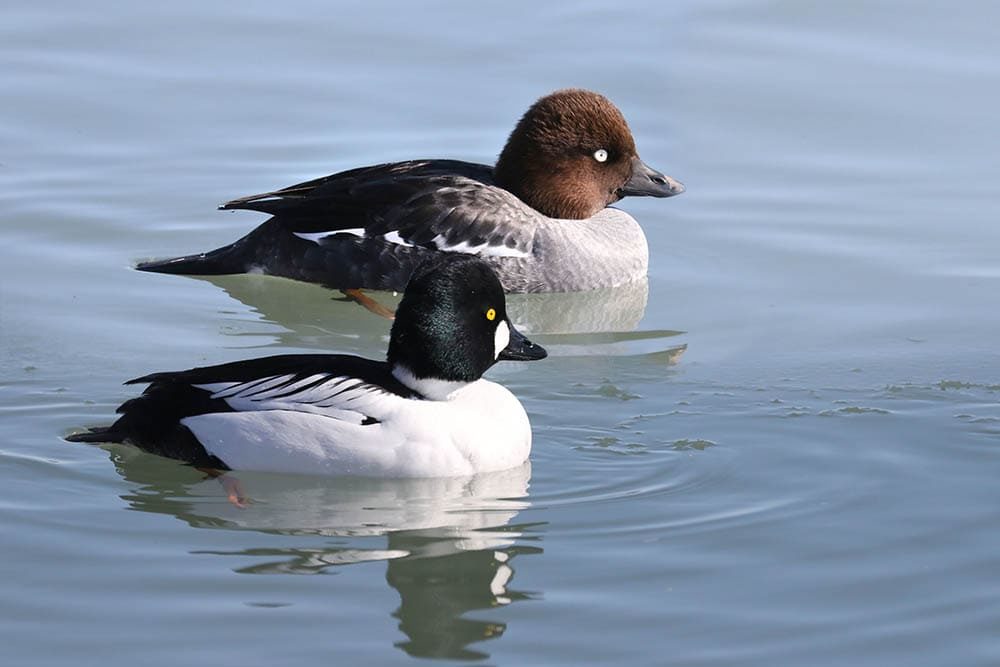
| Length | 16–20 inches |
| Weight | 2 pounds |
| Males | Black, green, white, grey |
| Females | Chocolate, grey, white |
The Common Goldeneye Ducks are also known as the Whistlers because of the distinct sound of their calls. Males have greenish-black heads and grey, black, and white bodies. Females have chocolate-brown heads with grey and white bodies. Both sexes have yellow eyes, giving them their name.
Common Goldeneye ducklings leave the nest at 1 day old and can feed themselves. They are sometimes then abandoned by their mother. Other times, two females will fight over territory and their young will scatter and mix. When the fight ends, not every duckling goes back to their original mother, giving each female a mixed brood to raise.
17. King Eider Duck

| Length | 18–25 inches |
| Weight | 3.6 pounds |
| Males | Blue, green, orange, black, white |
| Females | Rust, black |
The King Eider Duck is one of the most decorated waterfowl in the world. Males have black-and-white bodies with powder-blue heads and light-green faces. They have stunning orange and black bills. Females are marbled rust and black.
These ducks are expert divers, reaching great depths to find their food. They can dive as deep as 180 feet. They open their wings underwater to help them along. They nest on land, eating insects and plants.
18. Black Scoter Duck

| Length | 17–19 inches |
| Weight | 2.3 pounds |
| Males | Black, orange |
| Females | Brown |
Black Scoter Ducks forage for insects in warmer months and spend their winters diving for mussels. They are vocal ducks, with incessant, descending whistling coming from their flocks.
Males are velvety black with orange knobs at the bases of their dark bills. Females are brown with pale cheeks and dark bills. These ducks make a spectacle of themselves as they swim. They flap their wings while raising their bodies out of the water as they propel themselves across the top.
19. Surf Scoter Duck

| Length | 19 inches |
| Weight | 2.31 pounds |
| Males | Black, white, orange |
| Females | Brown |
Surf Scoter Ducks resemble Black Scoter Ducks except the male has a white patch on the top of his head. This earns these ducks the nickname of “Old Skunkhead.”
In the winter, they can be found diving in ocean waves in search of food. These ducks are molt migrants, meaning they fly to a safe area to molt their flight feathers after nesting. This makes them flightless for a brief period before they continue their migration. Their molt locations provide protection until they can fly again.
20. Greater Scaup Duck

| Length | 15–22 inches |
| Weight | 1.6–3 pounds |
| Males | Black, white, green, blue |
| Females | Brown, white |
The Greater Scaup Ducks spend their summers breeding in the arctic. Some even go into Europe. If you see these birds in Michigan, know that they have traveled a very far distance!
You’ll recognize the male Greater Scaups by their green heads, dark chests, white flanks, and grey backs. Females have brown heads and white patches around their bills. Both sexes have blue bills with black tips.

Conclusion
While these are the common ducks that you can see in Michigan, this list isn’t all-inclusive. You may see ducks that don’t match the ones on this list. Ducks are migratory, so you may also see some that are passing through.
If you are in Michigan, keep your eye out for these beautiful ducks. They have different appearances, habitats, and characteristics, but they are all delightful to watch. Now that you know their descriptions and names, they will be easy for you to spot.
Featured Image Credit by: Mircea Costina, Shutterstock
About the Author Robert Sparks
Robert’s obsession with all things optical started early in life, when his optician father would bring home prototypes for Robert to play with. Nowadays, Robert is dedicated to helping others find the right optics for their needs. His hobbies include astronomy, astrophysics, and model building. Originally from Newark, NJ, he resides in Santa Fe, New Mexico, where the nighttime skies are filled with glittering stars.
Related Articles:
Monocular vs Telescope: Differences Explained (With Pictures)
10 Types of Hummingbirds in Arkansas (With Pictures)
8 Types of Hummingbirds in Nebraska (With Pictures)
5 Types of Hummingbirds in Idaho (With Pictures)
3 Types of Hummingbirds in Mississippi (With Pictures)
8 Types of Hummingbirds in Kansas (With Pictures)
5 Types of Hummingbirds in West Virginia (With Pictures)
5 Types of Hummingbirds in Ohio (With Pictures)
